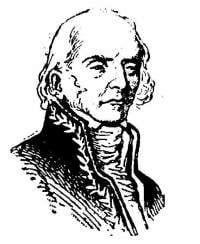Adaptation
A biological adaptation is an anatomical structure, physiological process or behavioral trait of an organism that has evolved over a period of time by the process of natural selection such that it increases the expected long-term reproductive success of the organism. The term adaptation is also sometimes used as a synonym for natural selection, but most biologists discourage this usage. Organisms that are adapted to their environment are able to:
- obtain air, water, food and nutrients
- cope with physical conditions such as temperature, light and heat
- defend themselves from their natural enemies
- reproduce
- respond to changes around them
Adaptations enable living organisms to cope with environmental stresses and pressures. One common form of physical adaptation is acclimatization. Acclimatization allows the organism to survive in a new environment. Adaptation can be structural or behavioural. Structural adaptations are special body parts of an organism that help it to survive in its natural habitat (e.g., skin color, shape, body covering). Behavioral adaptations are special ways a particular organism behaves to survive in its natural habitat. Physiological adaptations are systems present in an organism that allow it to perform certain biochemical reactions (e.g., making venom, secreting slime, being able to keep a constant body temperature).
Organisms that are not suitably adapted to their environment will either have to move out of the habitat or die out. The term die out in the context of adaptation simply means that the death rate over the entire species (population, gene pool ...) exceeds the birth rate for a long enough period for the species to disappear; due to individual phenotypic plasticity, individuals will be more or less successful.
It is possible for an adaptation to be poorly selected, the advantage it confers over generations decreasing, up to and including the adaptation becoming a hindrance to the species' long-term survival. This is known as maladaptation and can apply to both humans and animals in such fields as biology, psychology (where it applies to behaviors and other learned survival mechanisms) and other fields.
There is a great difference between adaptation and acclimation. Adaptation occurs over many generations; it is generally a slow process caused by natural selection. Acclimation generally occurs within a single lifetime and copes with issues that are less threatening. For example, if a human was to move to a higher altitude, respiration and physical exertion would become a problem, but after spending time in high altitude conditions one may acclimate to the pressure and function and no longer notice the change.
The theory of adaptation was first put forth by Jean-Baptiste Lamarck. His theories are also referred to as the inheritance of acquired traits.
Lamarck's theory was for a time held as an alternative scientific explanation for evolutionary change observed by Darwin in the The Origin of Species. The classic giraffe analogy offers the best delineation between the two.
- According to Darwin, more long-necked giraffes reproduce than short-necked giraffes and as such giraffes today have long necks.
- According to Lamarck, it was giraffes stretching their necks in response to higher leaves that resulted in giraffes having long necks. (This trait being passed on to the next generation)
Although neither theory in its conception could provide a complete description of the mechanism of transmission of trait variation (i.e., particulate inheritance), many recognized Darwin's theory immediately upon publication as a more complete and empirically supported theory. Modern genetics have since established the fundamental implausibility of Lamarckian inheritance, due to the one-way nature of transcription. However, see epigenetics and Baldwinian evolution for analogous processes in modern evolutionary theory.
External links
- Science aid: Adaptation Explanation of adaptation with cactus and polar bear examples, aimed at high school level
Credits
New World Encyclopedia writers and editors rewrote and completed the Wikipedia article in accordance with New World Encyclopedia standards. This article abides by terms of the Creative Commons CC-by-sa 3.0 License (CC-by-sa), which may be used and disseminated with proper attribution. Credit is due under the terms of this license that can reference both the New World Encyclopedia contributors and the selfless volunteer contributors of the Wikimedia Foundation. To cite this article click here for a list of acceptable citing formats.The history of earlier contributions by wikipedians is accessible to researchers here:
The history of this article since it was imported to New World Encyclopedia:
Note: Some restrictions may apply to use of individual images which are separately licensed.
